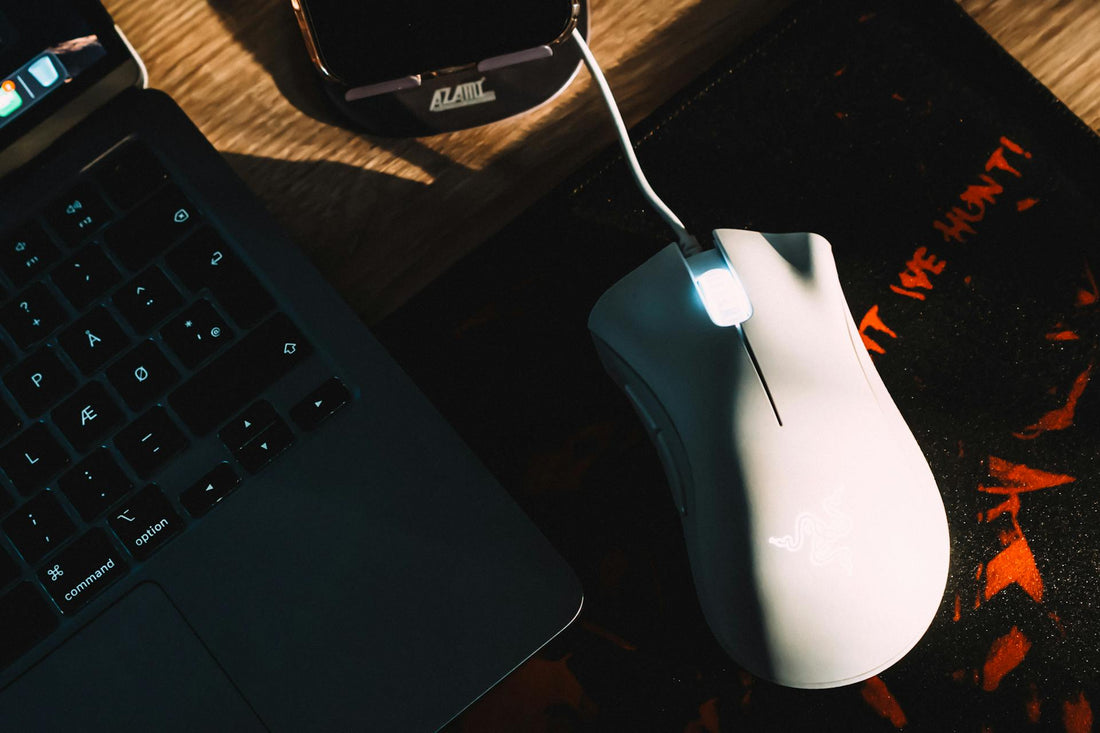
DPI Explained: Does Sensor Power Usage Change Accuracy?
Share
Short answer: A mouse sensor doesn’t become more or less accurate just because it uses a bit more (or less) power. Accuracy comes from sensor design, signal processing, surface quality, and stable USB/wireless signalling—not from raw wattage. However, aggressive power-saving modes in wireless mice can briefly affect tracking responsiveness (wake-up delay, smoothing) if not tuned well.
DPI, CPI, “accuracy” — what do these actually mean?
-
DPI/CPI (Counts Per Inch): How many counts the sensor reports per inch of movement. Higher DPI ≠ higher precision by itself; it just changes sensitivity.
-
Accuracy (tracking fidelity): How closely pointer movement matches real hand movement across speeds and surfaces. Driven by:
-
Sensor architecture (e.g., shutter rate, pixel array, SNR)
-
Lens & lift-off distance (LOD)
-
Firmware filtering/smoothing
-
Surface texture & pad cleanliness
-
USB/wireless link stability (polling, packet loss)
-
Where power IS used in a mouse
-
Sensor module: Illuminates the surface (LED/laser) and reads images.
-
MCU (microcontroller): Processes frames, filters noise, packs reports.
-
Radio (wireless only): Sends data to the dongle; background handshakes.
-
Lighting: RGB can be a surprisingly large share of wireless power draw.
Typical draw is tiny (tens to a couple hundred milliwatts). On wired mice, this comes from the 5V USB rail; on wireless, from the battery.
Does higher DPI increase power—and does that matter?
-
Higher DPI often means higher internal frame rates or more amplification, which can nudge power use up slightly.
-
But: modern “flawless” sensors maintain tracking fidelity across wide DPI ranges (e.g., 400–3200+) with negligible accuracy differences.
-
The bigger effect of cranking DPI is control: small hand jitters get magnified, so it feels less steady unless you lower in-game sensitivity accordingly.
Takeaway: Any small change in sensor power at different DPIs does not materially change accuracy. Choose DPI for comfort and control, not “power.”
When power settings can affect responsiveness
Wireless mice use power states to extend battery life:
-
Sleep/idle timers: If too aggressive, you’ll feel a wake-up delay on first movement.
-
Low-power scan modes: Some firmware reduces scan rate when idle and ramps up under motion. Poor tuning can cause initial smoothing or missed micro-movements.
-
RGB effects: High brightness reduces battery life; not accuracy, but frequent charging and radio handshakes can increase chances of momentary stutter in noisy RF environments.
Fix: Use “Performance” or “Low-latency” modes in software, lengthen sleep timers slightly, and dim/disable RGB on wireless.
Other factors that change perceived accuracy (more than power)
-
Polling rate stability
1000 Hz is solid for most players. 4K Hz can feel smoother, but only if your USB path is clean and CPU timers are stable. If 4K feels worse, try 1000/500 Hz. -
USB path & interference
Use rear I/O USB 2.0 for mice; avoid noisy front-panel hubs. For wireless, use a short USB extension to place the dongle near the mouse and away from USB 3 ports and Wi-Fi antennas. -
Surface & feet
Clean pad + PTFE feet give consistent glide and sensor images. Heavily textured or dirty pads raise noise, which can trigger more firmware smoothing. -
Firmware & drivers
Update mouse firmware, motherboard BIOS, and USB/chipset drivers. Disable overly aggressive USB selective suspend if you see random disconnects. -
LOD & lens alignment
A well-tuned lift-off distance prevents drift when you reposition. Many mice let you tweak this in software.
Practical setup: choose DPI for control
-
Common pro ranges: 400–1600 DPI. Pair with in-game sens to hit your preferred eDPI.
-
General guidance:
-
400–800 DPI: larger arm movements, great for FPS tracking.
-
800–1600 DPI: smaller motions; good for mixed use (work + play).
-
Above 3200 DPI: usually unnecessary; use only if you prefer micro-aim with very low in-game sens or very high-res displays.
-
Quick tests to validate your setup
-
Line test: In a paint app, draw slow straight lines at different DPIs. Look for jitter or angle snapping (if disabled).
-
Micro-adjust test: Track a small target in a game/aim trainer at your normal sens. Switch polling (500 ↔ 1000 ↔ 4000 Hz) and note consistency.
-
Wake-up test (wireless): Let the mouse sleep, then flick. If there’s delay, increase the sleep timer or use performance mode.
-
Port test: Try rear USB 2.0 vs front hub; for wireless, use a dongle extension. Choose the one with fewer skips.
-
Surface test: Clean the pad and feet; compare glide/consistency before vs after.
Myths vs Facts
-
Myth: “Higher DPI uses more power, so it must be more accurate.”
Fact: Power draw and accuracy aren’t causally linked. Sensor design and processing matter far more. -
Myth: “Wireless power saving ruins aim.”
Fact: Good firmware is effectively instant. If you feel delay, adjust sleep timers or switch modes. -
Myth: “30K DPI makes you a better aimer.”
Fact: It changes sensitivity, not innate precision. Use what gives you control.
Troubleshooting checklist
-
Set DPI to 400–1600, tune in-game sens to taste
-
Use 1000 Hz polling (try 500 if unstable; 4K only if your setup is rock-solid)
-
For wireless, enable performance mode and lengthen sleep timer
-
Move receiver to a rear port via short extension, away from USB 3/Wi-Fi
-
Clean pad & feet; check LOD settings
-
Update firmware/BIOS/chipset; review USB power settings
Conclusion
Accuracy isn’t about power usage. It’s about a clean sensor image, stable processing, and reliable signalling. Pick a DPI that gives you control, keep your USB/wireless path clean, and maintain your surface. Do that, and your mouse will track as accurately as it was designed to—without worrying about milliwatts.
From Serverblink (UK)
-
Shop gaming mice: /collections/mice
-
Mouse pads for smooth tracking: /collections/mouse-pads
-
Need help choosing DPI? Email support@serverblink.co.uk with your game, grip style and current settings for a personalised setup.
